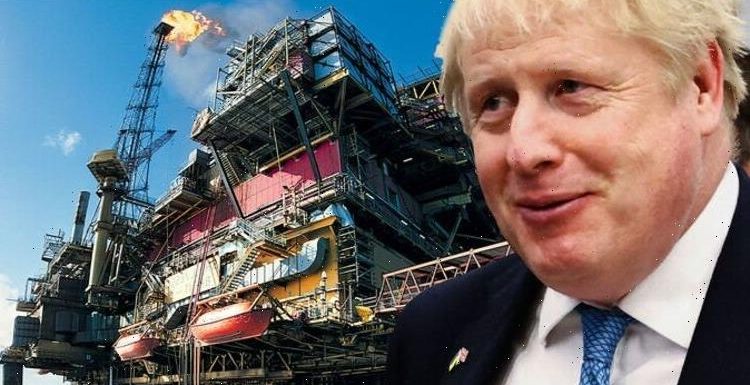
Onshore wind farms: Simon Hart on future of renewable energy
We use your sign-up to provide content in ways you’ve consented to and to improve our understanding of you. This may include adverts from us and 3rd parties based on our understanding. You can unsubscribe at any time. More info
Over the past year, global energy prices have skyrocketed, partly fueled by geopolitical tensions in Russia and Ukraine. Since Russian President Vladimir Putin invaded Ukraine over a month ago, European countries have been scrambling to end their reliance on Russian energy. In a bid to boost its energy security, the UK has unveiled its new British Energy Security Strategy that details the country’s energy transition plan over the current decade.
The plan sets out how the UK will accelerate the deployment of wind, new nuclear, solar and hydrogen, whilst supporting the production of domestic oil and gas in the nearer term.
The Government claims this plan will result in 95% of electricity by 2030 being produced from low carbon sources.
In the plan, the Government has announced a major boost to the production of oil and natural gas in the North.
The statement read: “Our ambitious plans also include a licensing round for new North Sea oil and gas projects planned to launch this Autumn, with a new taskforce providing bespoke support to new developments – recognising the importance of these fuels to the transition and to our energy security, and that producing gas in the UK has a lower carbon footprint than imported from abroad.”


Fossil fuel energy projects in the North Sea have been very controversial in the past, with the proposed Cambo oilfield facing a lot of backlash from climate activists who argued that the project will hamper the UK’s net-zero promises.
After facing heavy opposition from climate change protestors, the development of the oil field was put on hold when Dutch company Shell pulled out.
With the Government keen to boost the UK’s domestic energy production, the UK extended the licence of the oilfield last week
The Prime Minister, Boris Johnson, said: “We’re setting out bold plans to scale up and accelerate affordable, clean and secure energy made in Britain, for Britain – from new nuclear to offshore wind – in the decade ahead.

“This will reduce our dependence on power sources exposed to volatile international prices we cannot control, so we can enjoy greater energy self-sufficiency with cheaper bills.”
The British Energy Security Strategy also promises to increase the number of clean jobs in the UK “by supporting; 90,000 jobs in offshore wind by 2028 – 30,000 more than previously expected; 10,000 jobs in solar power by 2028 – almost double our previous expectations; and 12,000 jobs in the UK hydrogen industry by 2030 – 3,000 more than previously expected.”
Business and Energy Secretary, Kwasi Kwarteng, said: “We have seen record high gas prices around the world. We need to protect ourselves from price spikes in the future by accelerating our move towards cleaner, cheaper, home-grown energy.
“The simple truth is that the more cheap, clean power we generate within our borders, the less exposed we will be to eye watering fossil fuel prices set by global markets we can’t control.


“Scaling up cheap renewables and new nuclear, while maximising North Sea production, is the best and only way to ensure our energy independence over the coming years.”
Shell CEO, Ben van Beurden, said: “This is a once-in-a-generation opportunity to ensure an orderly transition to net zero while bolstering the UK’s energy security and Shell is ready to play our part.
“We plan to invest up to £25 billion in the UK energy system over the next decade subject to Board approval, and more than 75% of this is for low and zero-carbon technology.
“Offshore wind, hydrogen and CCS will all be critical but we need the right policy frameworks in place.
“We look forward to working with Government on the important detail in order to make this a reality.”
Source: Read Full Article